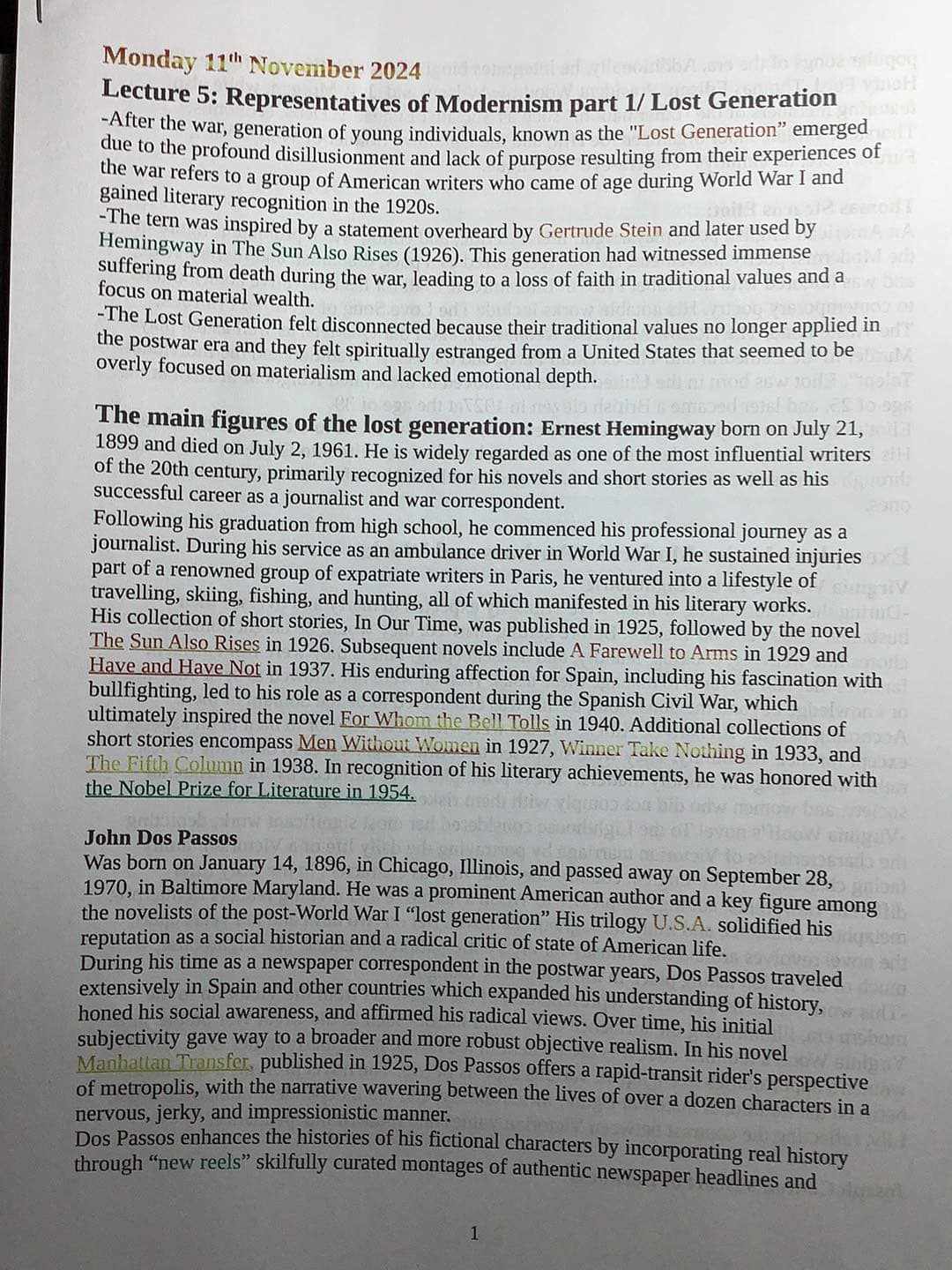What are the characteristics and main figures of the Lost Generation in the context of Modernism?

Understand the Problem
The question revolves around the characteristics and prominent figures of the Lost Generation, particularly in relation to Modernism after World War I. It asks for an overview of the themes and notable authors that define this literary movement.
Answer
Disillusionment and alienation define the Lost Generation; key figures include Hemingway and Dos Passos.
The Lost Generation was characterized by disillusionment, loss of identity, and alienation post-World War I. Key figures include Ernest Hemingway and John Dos Passos, who depicted these themes in their literary works. They critiqued materialism and explored themes of war, tradition, and societal changes.
Answer for screen readers
The Lost Generation was characterized by disillusionment, loss of identity, and alienation post-World War I. Key figures include Ernest Hemingway and John Dos Passos, who depicted these themes in their literary works. They critiqued materialism and explored themes of war, tradition, and societal changes.
More Information
The term 'Lost Generation' was coined by Gertrude Stein and it highlights the sense of lost purpose and disillusionment in a world transformed by war. Notable works include Hemingway's 'The Sun Also Rises' and Dos Passos' 'U.S.A.' trilogy.
Tips
A common mistake is to overlook the underlying themes of societal critique and disillusionment in the works of Lost Generation writers.
Sources
- Lost Generation - Wikipedia - en.wikipedia.org
- Lost Generation | Definition, Writers, Characteristics, Books, & Facts - Britannica - britannica.com
- Lost Generation | Definition, Characteristics & Writers - Study.com - study.com
AI-generated content may contain errors. Please verify critical information